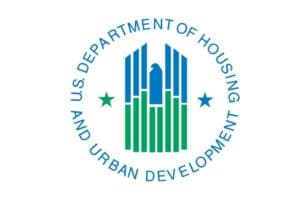Market Analysis

NH&RA Fall Forum Conference Materials Now Available
NH&RA was pleased to welcome over 200 industry professionals to our 2012 Fall Developers Forum. All conference materials including Power Point presentations, reports, memos and articles from the conference are available for download.

HUD Released Map-Based FMR and Income Limit iPhone App
HUD has released a map-based app for iPhone and Android that will allow users to search Fair Market Rents (FMRs) and income limits by current location or by metropolitan area, county, zip code and/or address.

HUD Publishes Three New Housing Market Analyses Reports
HUD has published Comprehensive Housing Market Analyses for three new metropolitan areas, Wichita, Kansas; Oakland, California; and Salinas, California.

NCHMA Annual Meeting Power Point Presentations and Materials Now Available!
NCHMA is pleased to present the conference materials including Power Point presentations relevant articles, reports, memos, etc. from our recent Annual Meeting held in Chicago, IL September 6-7 at the Conrad Hotel.

White House RPWG Reports on Rental Alignment Initiative Progress
The White House Domestic Policy Council’s Rental Policy Working Group (RPWG) recently held a conference to discuss progress of its ongoing rental policy alignment activities, including the various pilot programs underway and next steps for other alignment projects.

NCHMA Chicago Keynote Announced; Updated Agenda w/ Speakers
We are pleased to welcome Pat Costigan, Special Adviser to the Secretary, U.S. Department of Housing and Urban Development, as the keynote speaker at this year’s National Council of Real Estate Market Analysts Annual Meeting, September 6-7 at the Conrad Hotel in Chicago.

New NCHMA White Paper Addresses Scope of Work and Reporting Standards for Market Studies
The National Council of Housing Market Analysts (NCHMA) has adopted a new white paper that offers guidance and methodologies for providing a functional scope of work as a component of multifamily rental housing market studies.

Recommended Practices for Determining Demand
The National Council of Housing Market Analysts (NCHMA) has separate definitions of overall market demand and project specific demand Market demand is the total number of households in a defined market area that would potentially move into any new or renovated housing units. Market demand is not project specific and covers all renter households and income levels. Components of demand vary and can include household growth; turnover, substandard dwelling units, rent over-burdened households, and demolished housing units.

Best Practices For Rural Market Studies (DRAFT)
Several important differences between rural and urban market studies include market area definitions, evaluation of comparables, and consideration of demand. On the surface, it seems like defining a rural market area might be purely a matter of opinion, but well-established analytic tools are available to assist market analysts. Evaluating comparables, understanding how the proposal would fit into the market, and understanding what the demand calculations really mean are more a matter of experience.

White Paper: Determining Market Area
The definition of a market area sets the context and tone of the entire market study. While a somewhat subjective judgment, a market area’s size and density has a profound impact on an analysis in terms of understanding demographic trends, demand estimates and the competitive environment.

Selecting Comparable Properties
Comparable properties are used for several purposes within a market study. They are used to help evaluate the market, they are used to evaluate the subject’s position within a market, and they are used to determine market rents. The more similar the comparable properties are to the proposed property, the more reliable the conclusions that may be drawn. The purpose of this paper is to investigate the concepts involved in selecting comparable properties, and to identify some of the ways comparable properties are used in a study.

Calculating Market Rent
A market analysis for income properties, that is that includes rental units, requires an estimate of market rent. Depending on the purpose of the study, it could be an average market rent for all units in a defined market area, a weighted average market rent for all units, or for various unit types, ie., studios, one or two bedrooms, etc.